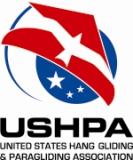Fuel and Oil Specifications for two stroke paramotors
by Had Robinson.
Updated April 22, 2025
Fueling equipment See the equipment page for more information. It is not so simple as most think. Metal containers are the best for storing gasoline because, unlike plastic, UV from sunlight cannot penetrate metal. UV and oxygen cause gasoline to *deteriorate* quickly. If you do use plastic (HDPE) containers, especially clear ones, store them in a cool, dark place and never in direct sunlight. It is wise to put labels with the date, mix, and type on fuel containers in order to prevent disasters. A piece of masking tape or a string tag work well.
A. Quick reference
Use 100% premium synthetic oils. In the U.S. these oils are widely available:
AMSOIL Dominator Synthetic 2-Stroke Racing Oil
Motul 800 2T or 710 2T Synthetic 2-Stroke Oils
Air Conception engines – 2% (50:1) full synthetic oil with premium ethanol-free MOGAS (motor vehicle gasoline)
Fresh Breeze Simonini 200cc – 2% (50:1) full synthetic oil with AVGAS (Fresh Breeze specifies that only AVGAS be used in their engines)
Minari engines – 2.5% (40:1) full synthetic oil with premium ethanol-free MOGAS
Polini Thor engines – 2% (50:1) full synthetic oil with premium ethanol-free MOGAS
Simonini 200cc – The factory version of this engine has special fuel and oil requirements because of different tuning than the Fresh Breeze version.
Top 80 engine – 2% (50:1) full synthetic oil with premium ethanol-free MOGAS
Vittorazi Moster 185 – 2.5% (40:1) full synthetic oil with premium ethanol-free MOGAS
B. GASOLINE
Gasoline choices - quick summaries
EU vs. US gasoline – "98" grade gasoline in the EU is the same as "93" in the US. The US Energy Administration has this helpful primer on the meaning of octane.
Casey's gasoline stations (US only) have an amazing selection of fuels including 100% pure premium unleaded gasoline, the fuel of choice for all paramotors.
Note on vapor pressure: The U.S. EPA requires that all automotive gasoline formulas have a lower vapor pressure (< 9.0 psi/62kPa) during the warmer months (May 1 - September 15) in order to lower smog levels. Some states have greater requirements e.g., California.
Unfortunately, during the colder times of the year, there are no EPA maximum vapor pressure requirements. This means that fuel in a negative pressure system (typical of nearly all paramotors) will have a greater tendency to form vapor bubbles that often causes a sudden stall or fading due to vapor lock. It is most common when at idle or full throttle. Pilots will have to decide whether their paramotors can tolerate the higher vapor pressure of the gasoline used during the colder season. They may have to use premixed racing fuel or AVGAS.
- Unleaded premium ethanol-free – unleaded 100% premium gasoline can be difficult to find. It is the #1
choice to use in any paramotor.
- Unleaded regular ethanol-free – We have not had problems using regular grade ethanol-free gasoline in nearly two decades
of use in most engines. If there were problems, we would have seen it when tearing engines down for repair. Nonetheless, some engines may
suffer pre-combustion with lower octane fuel. Always check your engine manual and, if possible, follow the engine manufacturer's
recommendation.
Running 2 stroke engines with a rich air-fuel mixture helps them cool better and mitigates the effects of lower octane fuels. However, if pilots are concerned about pre-combustion or have experienced it (pinging and/or overheating), you can put an aluminum washer under the plug. (We have various sizes of aluminum washers. Pilots may contact us to order.) If your engine already has a washer, replace it with a thicker one or add another. This will lower the compression and the internal temperatures inside the cylinder. Engine output will be lower. If you like to fly on the edge, options #4 or #5 below may be your only choices. - Unleaded premium with ethanol <10%. If you must use fuel with ethanol, follow the instructions below.
In general, ethanol tears up non-metal fuel system parts, especially pump diaphragms. We do not use ethanol fuels because of the greatly
increased maintenance.
- Premixed racing fuel – Pilots who cannot find ethanol-free gasoline can purchase ready-to-use, pre-mixed fuel made by VP Racing Fuels. These fuels are 94
octane and use full synthetic oil. They have 50:1 and
40:1 mixes available. Most major home and farm supply stores (e.g., Atwoods, Wal-Mart, and Home Depot) have these fuels. VP Racing fuels contain stabilizers
so that the containers can be opened, exposed to the air yet, according to the manufacturer, the fuel will remain fresh for a year. Accordingly, additives are used to prevent
the deterioration of the oil that has been mixed with the gasoline. These fuels are probably the finest that can be used in any two stroke engine
but they are expensive.
- Aviation gasoline – Be cautious in using AVGAS in paramotors, especially those larger than 100cc. Some
manufacturers specifically allow it when premium unleaded ethanol-free fuel is not available e.g., some models of the Polini Thor. The
issue is
lead deposits which can foul the lands on the piston and cause ring sticking. This is not an issue when operating at high
altitudes (>4,000' MSL) because of lower combustion temperatures. The addition of fuel additives, like TCP, can lessen the problem
but does not eliminate it. We have discovered this from thorough testing at various altitudes and climates. Small engines do not get as hot when running so fouling of the lands
does not occur. To find out if your engine tolerates
AVGAS, remove the exhaust pipe and see if you can move the piston rings by pushing them with a plastic or wood stick. If
they stick, even a slight amount, you have your answer. You should remove the head and cylinder to clean up the fouling.
If you use AVGAS, make the fuel mixture as rich as possible and/or lower the compression by putting an aluminum washer under the spark plug. Be sure to check your piston lands for lead fouling frequently (every 25 hours). Your engine may not have any problems. Paramotor engines are all different in how they react to AVGAS. Remember that AVGAS is the finest and most carefully manufactured fuel in the world. If it works in your engine, use it. It is 100 octane.
WARNING: Our shop has boxes of burned out engines, most of which were ruined because of cheap/old fuel, water contamination, and a failure to perform routine maintenance. Water-saturated ethanol fuels, in particular, will cause erratic engine performance because of different stoichiometric requirements. Paramotors are closest to chainsaws in design and carburetion. Unfortunately, paramotors experience vapor lock and fuel starvation far more than any other type of internal combustion engine because of the fuel tank being so far below the engine.
Notes
Exxon Mobil has this primer on gasoline storage. Cheap or old gasoline can ruin engines, especially when run at or near sea level where engines run hotter. Make certain that the gasoline is fresh (less than 30 days old) unless it have an preservative, like Stabil or SeaFoam. Stabil notes that gasoline can be stored for up to (6) months but it is not easy to meet the storage requirements which is mainly keeping oxygen away from the fuel. If the fuel containers are 100%sealed preserved gasoline can be stored for 12 months. The presence of oxygen is what ruins gasoline.
Honda has this quick reference on how to avoid fuel problems.
Chevron published this technical document on motor fuel which is helpful for those wishing to improve their knowledge of fuels rather than rely on hearsay and rumor of which there is way too much of in the paramotoring community.
EXXON's notes on aviation gasoline contains these remarks on the lack of quality control in MOGAS. It should be obvious why pilots should only buy gasoline from major suppliers:
Note that properties critical to aviation use (for example, vapor pressure and cleanliness) are not controlled to the same degree in automotive motor gasoline manufacture and handling. ExxonMobil aviation does not support or approve the use of Automotive Gasoline as aircraft fuel. – from their page on AVGAS (no longer published)
Types of gasoline in detail
1. Regular grade ethanol-free automobile gasoline
WARNING: ETHANOL WRECKS FUEL SYSTEMS AND ENGINES.
High quality regular ethanol-free gasoline is a good choice because it burns with the least amount of deposits but only if it is fresh (<30 days old) or properly preserved and stored. Briefly, all automotive gasoline (MOGAS) will start to decay when it comes in contact with oxygen whether in the air or from ethanol. Stored properly, MOGAS can last about (6) months but longer with additives e.g., Stabil or Sea Foam. How old is the fuel at the pump? High volume stations will have fresher fuel. But you will never really know. (Please see Fresh fuel only below for more information on this.) Modern automobiles will run on just about any concoction of unleaded gasoline and other chemicals, even fuel that is months old.
MOGAS winter formulas, including premium grade, have more volatile and cheaper components that cause the gasoline to form vapor bubbles a.k.a. vapor lock when the negative (suction) pressure pulls the fuel up from a partially empty tank. It can be so severe that the engine will stall or only run at idle or less than 1/2 throttle. Pilots who experience fading or stalling of the engine during winter months may have to use racing fuel (see below).
Southwest Airsports has developed the FSM to counteract most of these problems but is still being tested for safety. Some states require the same quality (and vapor pressure) year around e.g., California. MOGAS summer formulas required by the EPA begin May 1st and end September 16th.
Premium ethanol-free unleaded gasoline can be difficult to find. We have had no problems using regular grade ethanol-free gasoline in our test engines. However, if pilots are concerned about pre-combustion, put an aluminum washer under the plug. If it already has one, put another. This will lower the compression and, therefore, the octane requirements. Power output will be less, however.
ROTAX had some important notes about why pilots should use only premium fuel and why a high octane value is needed. These notes were taken down because of European kooks that want to ban all liquid carbon-based fuels. (Note: these hypocrites still fly around in expensive aircraft that use Jet A fuel that is made from crude oil.) Gasoline with a high enough vaporization pressure to make it compatible with the negative fuel system pressure in all paramotors (except the Fresh Breeze) is more likely to come from a major supplier. Cheap fuels are cheap for a reason!
- First, when fuel is premixed with 2-stroke oil, the octane rating is reduced by about 2 points. An 87 octane fuel would therefore become 85 octane.
- Second, fuel evaporates and loses its octane rating when it is in your fuel tank or not stored in an air-tight container. Premium 91 octane fuel will see its octane rating reduced to unusable levels after as little as three weeks. Fuel with a lower octane rating would obviously have an even shorter usable life.
Lowering the compression ratio with a washer causes a reduction of engine power but allows us to use regular grade ethanol-free gasoline. Another advantage of easing off the power output is that all engines will last longer and have more infrequent maintenance requirements.
2. Automobile gasoline with ethanol (regular or premium)
Many (2) stroke engine manufacturers continue to issue warnings about the problems with fuels containing ethanol. Ethanol is a powerful solvent and attacks soft fuel system parts. It also attracts moisture which can cause corrosion of metal parts and leans out the air/fuel mixture. Ethanol also lowers the vapor pressure of gasoline and increases the problem of vapor lock in hot weather.
Most paramotors use various models of the Walbro diaphragm carburetor and Walbro warns about the potential damage caused by ethanol in gasoline. The block quote below was taken down by Walbro most likely because of threats from their legal team or by the kooks at the U.S. EPA concerning any negative remarks about ethanol in gasoline.
The simple fact is, ethanol in gasoline can damage Your fuel system. Gasoline which is organic will begin to decay due to high amounts of oxygen in fuel containing ethanol. Ethanol containing fuel will also absorb moisture from the air because ethanol is hygroscopic and will attract moisture. This added moisture can lead to phase separation. With phase separation comes corrosion to critical engine and fuel system components. The fuel system can also be impacted by contaminants carried in the gasoline itself, as well as gasoline containing ethanol. When used in mowers and other power equipment, ethanol can lead to higher operating temperatures, erratic running, and engine-part failure.
The bottom line is that those who use ethanol fuels must also use fuel additives that help preserve the gasoline, lessen the damage caused by moisture in the fuel, and help prevent the formation of the ethanol goo which clogs most filters. If you must use ethanol fuels, be sure to add the correct additives to help lessen that damage (see below).
Mercury Marine has this to say in their owner's manual for the OptiMax 135 HP outboard:
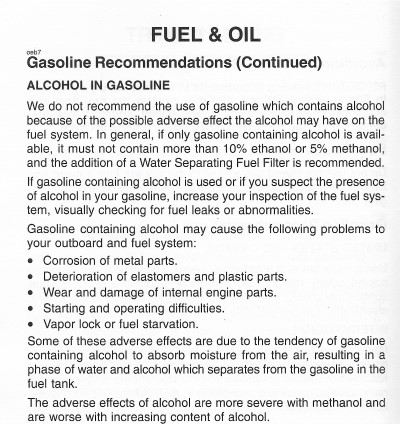
Water in the fuel system clogged this carburetor's fuel inlet screen and made it impossible to start or run the engine. After the saturation point with water is reached, additional water remains separated from the fuel. When it reaches the inlet filter screen in the carburetor, it takes 30-60kPa (5-10 psi) to move it through the screen. That is, the water acts as a dam to fuel in the system. Goo created by the presence of ethanol also cannot pass through the inlet screen.
Automotive gasoline that contains ethanol should only be purchased from a major company, like Exxon, Esso, BP, Chevron or Shell, because their fuels contain important additives, especially detergents, that lessen the buildup of carbon inside the cylinder and create less gunk in the fuel system caused by the presence of ethanol.
NEVER USE GASOLINE WITH MORE THAN 10% ETHANOL.
Here is another water and debris clogged inlet filter screen of a carburetor from ethanol gasoline that had become saturated with water. Fuel was unable to pass through the filter preventing the engine from running.
Observe these precautions when using ethanol fuels:
- Fuel stabilizer Add Stabil, Sea Foam, or an equivalent fuel treatment to keep the fuel fresh. Unless Chevron
premium gasoline is used, it is helpful to add their Techron additive (or an equivalent) periodically. It does an amazing job cleaning the
fuel system of gunk and other residue.
- Fresh fuel If you are using premium ethanol gasoline (as you should), did you pump a gallon into your vehicle first? If you do not do this, the fuel in your portable tank could be 50% regular grade fuel. Do NOT allow gasoline with ethanol to sit for more than a month in the fuel system as it can damage the metal and non-metal parts of the engine. If fuel stabilizer is used, blends can be stored in ordinary gasoline containers for many months IF NOT MIXED WITH OIL. If pilots store motors for more than a few weeks, they should purge the fuel lines and carburetor. Ethanol is a powerful solvent that causes non-metal fuel system parts (tubing, gaskets, diaphragms, filter material) to deteriorate. It can cause some makes of fuel line to swell enough to allow the pickup tube filter in the fuel tank to fall off. Ethanol is hygroscopic and also conducts electricity. This causes electrolysis of the metal parts in the engine and is why those using two stroke engines in a marine environment have endless problems. The metering lever spring inside the carburetor can be affected from corrosion in the presence of ethanol blended fuels (which is why it should be replaced every time the carburetor is rebuilt). Remember that fresh fuel (< 30 days old) is always better than old fuel, even when stabilizer is used. This warning from Troy-Bilt is a great summary about the problems with all ethanol gasoline.
- Carburetor maintenance Regularly test the
pop-off
pressure of your carburetor with a pop-off gauge because of corrosion and weakening of the
pop-off spring caused by electrolysis and/or the presence of water that is mixed with the fuel. Testing the pop-off and, more importantly, the rest pressure is the only way to tell if the spring or ML valve seat is bad. Miniplane-USA stocks the
springs for most carburetors used on paramotors. Low pop-off pressure dramatically
affects the high-end output of an engine due to a richening of the fuel mixture. High pop-off pressure is usually caused by water in the
fuel. Rebuild the carburetor often or when the idle becomes erratic.
- Water contamination Check that the gasoline does not
contain either water (mixed in with
the ethanol) or more
than 10% ethanol. Wiki has a good
article on the stability of gasoline, especially ethanol mixes, and what happens as these mixes age.
- Percent ethanol Test the ethanol percentage in the fuel with an
ethanol
percent tester. The fuel sampled here contained exactly 10% ethanol.
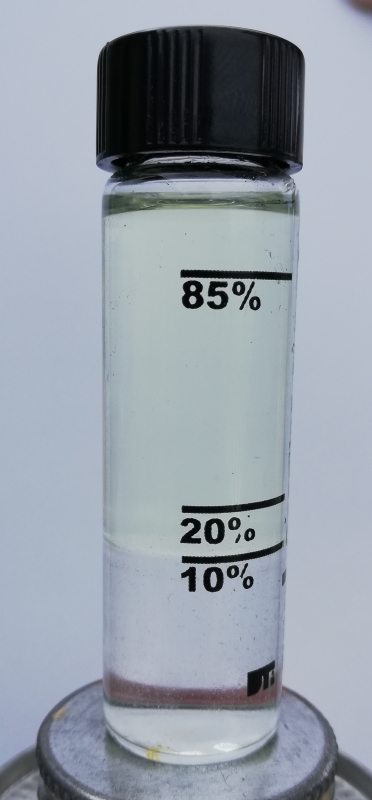
If 10% ethanol fuel contains water the fuel tester will indicate an ethanol content <10%. This is another reason why pilots who live in humid parts of the world should not use ethanol fuels in their engines unless they are certain that it is not contaminated with water. For example, if you test fuel that is supposed to contain ethanol and the tester shows it to be ethanol free, the fuel has been fully saturated with water. Such fuel will ruin a 2 stroke engine. - Air-fuel mixture Be sure that the engine is not overheating or running too rich. The Walbro Service manual notes that ethanol blends will cause carburetors designed for pure gasoline (like the WG8 and WB37) to run leaner and cause the engines to run hotter. This is another reason for pilots to install a cylinder head temperature gauge. Ethanol fuels require less oxygen than the same quantity of pure gasoline. This means that ethanol fuels may require different carburetor jetting i.e. a larger main jet size. This aspect of ethanol fuels is largely ignored.
Here are some of the endless comments on gasoline with ethanol from the engine and carburetor manufacturers. Unfortunately, censorship by government agencies have forced many sites operators to delete pages discussing the evils of ethanol fuels. The sites below may or may not be available.
Briggs & Stratton
We DO NOT recommend the use of gasoline which contains alcohol, such as gasohol. However, if gasoline with alcohol is used, it MUST NOT contain more than 10 percent Ethanol and MUST be removed from the engine during storage. - Owners Manual series 90100 (small engine)
Recreational Power Engineering, the U.S. distributor of the 2 stroke Hirth engines, has these recommendations on fuel and oil for the Hirth engine. They warn against using ethanol fuels and synthetic oils in humid environments. They allow the use of AVGAS if anti-lead fouling additives are used, like TCP or Decalin RunUp. However, our testing of AVGAS has caused problems in some engines, especially larger engines with high hours.
Moeller Marine Products, manufacturers of fuel system components, has this warning,
Ethanol is a common additive to blend the fuels with, and while ethanol may not pose the environmental hazards of other gas additives, the chemical properties of ethanol have the potential to cause severe damage to engine systems.
Walbro, the manufacturer of the (obsolete) carburetors used on Miniplane engines, warns users in this video about using ethanol blended fuels and how to prevent damage to the carburetor and fuel system.
Bel-Ray I discussed ethanol fuels with Bel-Ray, a manufacturer of two stroke motorcycle racing lubricants. They noted that their oils mix correctly with ethanol fuels but warn users that the fuel must not have ethanol >10%.
FRAM, a manufacturer of filters, warns users not to use ethanol fuels that have more than 10% ethanol because it will damage their filters.
Poulan, a chain saw manufacturer, warns of the serious problems caused by blends with ethanol >10% or which have been contaminated with water.
Troy-Bilt has this warning about ethanol fuels for their 2 stroke leaf blower.
Seastar Solutions, a major manufacturer of marine fuel system parts, warns owners to replace their fuel filters every 50 hours or once a year because of the effects of ethanol in gasoline. They also warn owners that ethanol causes deterioration of fuel system lines, making them hard and brittle from the inside out.
Below are some photos of a carburetor that stopped working due to water and gunk from gasoline with ethanol. In the first photo, water, goo, and gunk covers parts of the fuel pump diaphragm. The pump could not do its job. In the second photo, the fuel inlet screen is clogged. The internal fuel pump in this carburetor could not deliver fuel. The pilot was lucky that he did not burn up his engine.
The piston pictured below seized as a result of a lack of lubrication. The owner of this Top 80 stated that he added oil to the gasoline in his motor. The likely explanation is that the ethanol fuel had been contaminated with water, causing the lubricating oil to separate out. Chris Barker of Royal Purple synthetic oils confirmed in a telephone call to me that water contaminated ethanol fuels will do this.
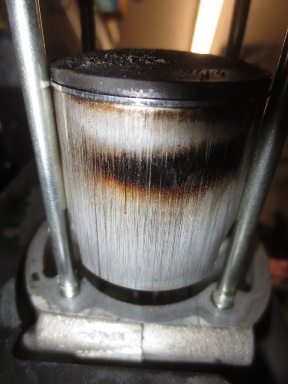
To find sources of ethanol free fuel, go to https://pure-gas.org. If you find ethanol-free fuel at a service station, check it before filling up as it may be mislabeled.
IF AT ALL POSSIBLE, DO NOT USE ETHANOL FUELS IN YOUR PARAMOTOR!
3. Aviation Gasoline
AVGAS has some advantages. It is the purest, the most stable, has the lowest vapor pressure, stores indefinitely, and has the highest octane of any commonly available gasoline.
However, the lead deposits it creates may cause problems. Other paramotor mechanics have noted that ring sticking is common when AVGAS is used. We just recently confirmed this in tests run on a 130cc engine at sea level during the last year (2021). Interestingly, the same engine run at high altitude (4k' MSL) did not experience ring sticking over many years. This is probably because engines at sea level run hotter which contributes to the deposit problem.
Below is a piston from the test engine that has parts of it which are coated with lead phosphate (light gray in color). The AVGAS had the TCP additive which greatly helped with deposit fouling – but it was not enough. The rings were stuck on one side and were difficult to remove due to the migration of the deposits into the lands. As the engine ran, the problem worsened. The sticking piston rings allowed blow-by of the burnt fuel (clearly shown in the photo below). It took over an hour to remove the deposits. There was at least a full teaspoon of lead phosphate that was scraped and brushed off. The decompression port in this engine also had some minor deposits but they were easy to clean. The engine was put back into service with no problems.
Despite the many advantages of AVGAS, the issue of lead deposit fouling in some paramotor engines makes it a last choice. 100LL AVGAS was engineered to be used in 4 stroke engines, not 2 stroke which has a different method of lubricating the cylinder walls and piston rings.
Pilots who use AVGAS will have increased routine maintenance (deposit removal from the cylinder head and piston). However, if you fly at high altitudes, the lead deposits may not be an issue. Larger engines and engines with high hours may also be more susceptible to fouling.
If AVGAS must be used, add a fuel treatment. If treated with the additive TCP or Decalin RunUp, the problem of lead oxide fouling is not nearly as bad. A quart of TCP (cost <$40 US) will treat 320 gallons. A quart of Decalin (not "certified" for aviation use) costs $35 and will treat up to 640 gallons, depending on the engine. For TCP, this comes out to about $ 0.13/gal and $0.05/gal for Decalin). For info on how TCP works, read this pamphlet from Alcor. The active chemical in these additives is known as a lead scavenger. During combustion, the tetraethyl lead is converted into lead phosphate instead of lead monoxide. Lead phosphate is a non-conductive compound that does not foul spark plugs (or short them out, as I experienced one time). Rather than build up on the piston and spark plug, nearly all of the lead phosphate is carried harmlessly out in the exhaust stream in most engines.
Additionally, inspect engines using AVGAS more often e.g., every 25-50 hours. Fouling of the rings and lands is easy to see if the exhaust manifold is removed, exposing the piston. If you must use AVGAS, make your fuel mixture as rich as you can stand and/or lower the compression by putting an aluminum washer under the spark plug. You may be lucky and not have any problems. Paramotor engines are all different in how they react to AVGAS.
Use of poor quality fuel
Cheap fuel has all sorts of problems, including widely varying quality, lack of cleanliness, high vapor pressure, poor quality control in summer/winter formulas, and the presence of contaminants, especially water. ONLY USE GASOLINE FROM MAJOR REFINING COMPANIES IN YOUR PARAMOTOR.
If you must use low octane/poor quality fuel, add another spacer washer under the spark plug. This will lower the compression ratio and running temperature of the engine (horsepower will also decrease). If you get too much spacing, you will not harm anything except lower the engine output. The special aluminum spark plug spacer washers (2mm) are available from Miniplane-USA. Poor quality fuels will also vaporize (form bubbles) in the fuel system more readily which will lean out the air/fuel mixture. The carburetor pump will stop working if there are too many vapor or air bubbles in the fuel.
Winter vs. summer gasoline formulations
It is important for pilots to note that automotive service station gasoline (MOGAS) is formulated differently for the cold and hot seasons of the year in most states in the U.S. and in foreign countries. We have learned – the hard way – that gasoline refined during the winter months has problems with vapor lock. That is, the fuel can turn to "fizz" (bubbles) inside the fuel system and cause vapor lock. It is especially noticeable when going to idle while flying when a bubble in the fuel stream will stall the engine. Vapor lock will starve the engine of fuel and can cause lean-out under high loads, which can damage the engine. Therefore, it is a good idea not to use fuel refined in winter for use in the summer. It does not matter whether fuel preservative is used or not.
This video of fuel vapor bubbles forming in gasoline when a vacuum head of about 3' (1m) demonstrates the inherent problem in gasoline subject to negative atmospheric pressure i.e. being sucked rather than pumped out of a fuel tank. This is why small aircraft have gravity fed fuel systems or use in-tank pumps. Pilots can see for themselves how fuel can become vaporized by using a jiggle-siphon to move fuel from an elevated tank to another tank a few feet (a meter) below. As the fuel is rapidly moving through the siphon tube, jam the jiggle valve against the bottom of the upper tank and you will see a sudden appearance of bubbles in the siphon tube. This is caused by a negative pressure in the tube which causes the fuel to vaporize and form bubbles. These bubbles in the fuel system will stop the movement of fuel through a carburetor. This video of fuel vaporization in a running engine prevented it from achieving full throttle.
Fresh Fuel ONLY
Honda Motor Co. has these words about the importance of fresh fuel,
Fuel deterioration and oxidation can occur in as little as 30 days and may cause damage to the carburetor and/or fuel system. ...Deteriorated gasoline will cause hard starting, and it leaves gum deposits that clog the fuel system. If the gasoline in your engine deteriorates during storage you may need to have the carburetor and other fuel system components serviced and replaced. ...You can extend fuel storage life by adding a gasoline stabilizer that is formulated for that purpose, or you can avoid fuel deterioration problems by draining the fuel tank and carburetor. – from the 2011 Owner's Manual for the GX120, GX160, and GX200 engines
Be certain that fuel is fresh (less than 2 weeks old is best). Those who live in humid climates must exercise much greater care when using fuels mixed with ethanol because of the hazard of water contamination. Typically, water contamination occurs when humid air enters a fuel storage tank through the main vent. As the barometric pressure lowers (e.g. from a storm) water in the air may condense on the wall of the tank and wind up at the bottom – and eventually into your engine. If fuel stabilizer is used, ordinary gasoline can be stored for a year.
Here is what MOGAS looks like after a small amount of it was stored for a few months in an ordinary gas can. The gas can was less than 1/2 full i.e. there was plenty of air (oxygen) available to oxidize the fuel. Fuel stabilizer was not used. Fresh gasoline is as clear as water.
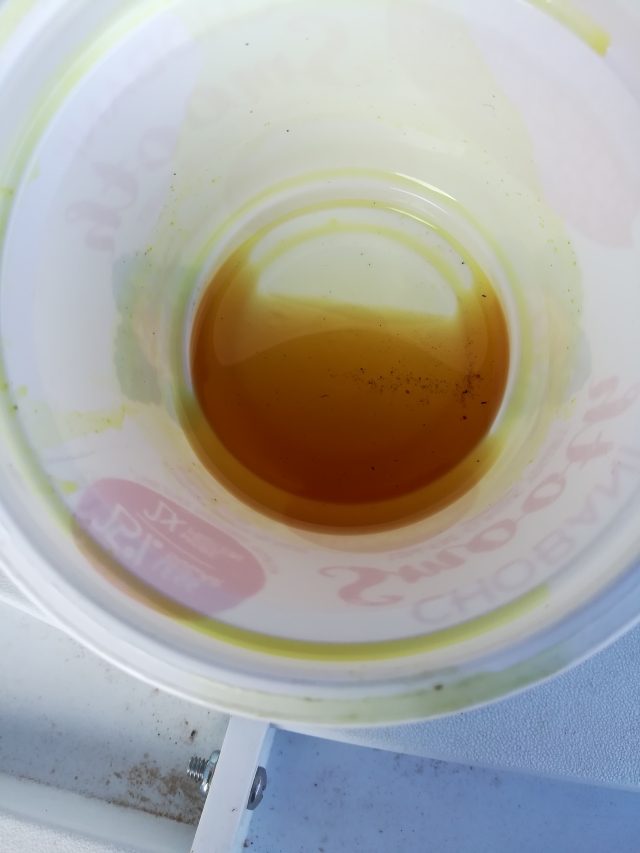
Sticking piston rings
Running any engine too hot (lean conditions) will cause the lubricating oil to burn at the lands, including the sides of the cylinder and piston, due to piston overheating, regardless of what kind of fuel is used. This creates the black gummy deposits which can bind the ring. Red Line (a two stroke oil manufacturer) notes this in one of their technical documents.
This piston came from a fuel starved engine which overheated. Even though unleaded fuel was used, the piston was hot enough to burn the lubricating oil that is on the surface of the piston. The piston ring was stuck in the lands due to the burnt oil. The pilot flew this engine at the beach. The long vertical gouge was probably caused by a sand grain getting sucked into the engine and then caught between the cylinder and the piston. If the pilot had used 100% synthetic oil there would not have been as much damage.
Cheap fuel/oil, old fuel, and/or ethanol fuels contaminated by water will leave damaging deposits that can find their way into the piston ring and cause it to stick. Another problem with the cheap oils is that they tend to rapidly clog the decompression port, if present, on 2 stroke engines.
C. 2 STROKE OILS
Increasing the oil mix ratio
Increasing the amount of oil in the gasoline above the manufacturer's recommended value does not prolong the life of the engine. Increasing the oil mix increases the viscosity of the mix and, as a result, leans out the fuel mixture which can cause overheating. Oil also burns hotter than gasoline. If outboard motor manufacturers (e.g. Evinrude, Johnson) recommend increasing the oil mix in new engines, why not increase it in paramotors? This is because an outboard is water cooled and is virtually impossible to overheat, unlike air cooled engines which are used in most paramotors.
However, some paramotor manufacturers specifically recommend increasing the oil mix ratio in new engines. They have engineered the engine so that it can withstand the additional heat generated by the increased oil mix. If your engine manual does NOT specify increasing the oil mix, don't. In general, follow the directions in your engine's manual and ignore the bloggers and all others who claim to have "special knowledge" about fuel and oil.
Type of oil – I no longer recommend using semi-synthetic oils in paramotors. Use a 100% full synthetic oil, such as Amsoil's Dominator. Pure synthetic oils are more resistant to the effects of heat: overheated oil cannot lubricate. The piston below (inside view) shows what happens to cheap oil when things get hot. The black gunk will also get in the piston lands and can cause the rings to stick, ruining the cylinder wall.
When the cylinder wall temperature exceeds 180ºC, the lubricating properties of ordinary oil begin to deteriorate. It is one of the most important reasons to use 100% synthetic oils.
This page from NTN of Japan has information on lubricants for roller bearing that is helpful for PPG pilots.
Two stroke engine oils:
- Amsoil DOMINATOR 2-Stroke Racing Oil (most motorcycle shops)
- Bel-ray Si-7 Synthetic 2-Stroke Engine Oil (eBay and others)
- Fuchs Silkolene Comp 2 Plus Pro full synthetic (hard to find in the U.S.)
- Motul 800 2T or 710 2T (most motorcycle shops)
- Motorex Cross Power 2-T (most motorcycle shops & eBay)
- Red Line 2 Stroke Racing Oil (eBay and others)
- Shell Advance Ultra 2 (hard to find in the U.S.)
You have a $6,000 paramotor and you want to save a few bucks on oil. Does this make sense? Racing oils e.g., Amsoil Dominator are not supposed to be used on public highways because they don't burn 100% and pollute more but they are the best oils to use in any paramotor.
A good mixing bottle is from Shoreline Marine and is sold by Sports Academy and others. It is simple, well marked, and can be sealed to keep dirt out.
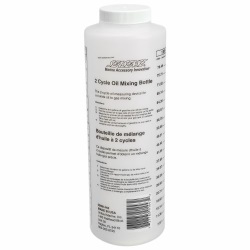
1. Polini Thor and Top 80 engines – Full synthetic 2-cycle oil at 2% mix (50:1 ratio). Miniplane has reported that using full synthetic oils at the 2% mix ratio may cause engine overheating under certain conditions i.e. running at full throttle for extended periods. Therefore, it is a good idea to keep an eye on your CHT while running the engine. We have never seen this problem in a Top 80, however.
Higher mix ratio – Miniplane allows a 1.5% mix (67:1) for the Top 80 and Thor models if full synthetic oil ONLY is used. The brands of oil Miniplane recommends for a 1.5% mix are not available in the U.S. Why use the lesser oil mix? Engines using the 1.5% mix will run cooler and more efficiently because of the lower viscosity of the fuel mix. In addition, the lower ratio has less negative impact on the octane value of the fuel. The addition of oil to the fuel mix lowers the octane value of the fuel. Lowering the octane of the fuel can cause pre-ignition. I have observed that the 1.5% mix results in a smoother running engine and a small improvement in power output but I would be careful and use only the finest oils if using this ratio.
If you do use the 1.5% ratio, never use gasoline containing ethanol.
2. Minari – Full synthetic oil at 2.5% (40:1)
3. Fresh Breeze Simonini Mini 2 Plus – Full synthetic oil at 2% (50:1) AVGAS only. Fresh Breeze recommends that pilots use Castrol TTS oil. However, Castrol TTS oil is not recommended by some engine manufacturers because this 100% synthetic oil does not stay mixed in unleaded gasoline containing ethanol. Our own tests with the oil demonstrate that it mixes well with AVGAS. Our experience with this oil is that it can be hard to find at times in the U.S., to say nothing of the controversies surrounding it.
4. Simonini Mini 2 Plus – The factory version of this engine has special fuel and oil requirements because of different tuning than the Fresh Breeze version.
5. Vittorazi Moster 185 – 2.5% (40:1) full synthetic oil with premium ethanol-free MOGAS
6. Air Conception Nitro & Tornado – Full synthetic 2-cycle oil at 2% mix (50:1 ratio).
Fuel oil ratio
Some mix their fuel at a lesser ratio than the recommended 50:1 for the Top 80, e.g. 40:1, thinking that it helps lubricate engine parts better or is necessary when breaking in a new Top 80. Both Miniplane and Polini warn against this practice as it can damage an engine due to the increased fuel mixture viscosity which leans out the fuel/air mixture and overheats the engine. Always be sure to follow the recommendations of the engine manufacturer. Pilots have to resist rumors and hearsay and stick to the engine manuals and information from well-researched sources, like this web site. Note that outboard motors are water cooled and will not overheat.
Here is a discussion of what can happen when lower fuel oil ratios are used in engines where this is not recommended. It will lean out the fuel burn and can foul the combustion chamber, including the piston ring, regardless of the type of gasoline used.
Minari has this note in their user manual, "WARNING: Please note that an excessive amount of oil does not stretch the life of the engine. a wrong quantity of oil leads to seizure." That is, too much oil in the gasoline can cause overheating in some engines.
Polini has this note in their user manual for the Thor engines, "...mixes that contain too much oil do not extend the engine’s life."
Everything depends on how the engine is engineered and the jetting used in the carburetor. Do not experiment with the fuel/oil ratio but do exactly what the manufacturer specifies. See this page on labeling fuel containers properly which can help prevent a disaster.
Mix the oil just before use
Per Miniplane, other paramotor manufacturers' recommendations, and the experience of many pilots, it is always best to mix small quantities of oil and fuel just before use and not store the mix more than (2) weeks no matter what kind of gasoline is used. The lubricating properties of the oil are affected by long term contact with any kind of gasoline, with fuel additives, and especially with ethanol blends. I mix fuel and oil (2) gallons at a time. It is a nuisance but it means my fuel mix is fresher.
Here is some good advice from Vittorazi (please excuse their poor English),
A mixture that has been prepared from 2-4 weeks and left in a tank, could separate the oil from the gasoline, losing the characteristics of lubrication even if shaken before the use. Avoid to prepare big quantities of mixture, when you are already conscious to use only a part of it.
Always fly safely and courteously.
![]()



